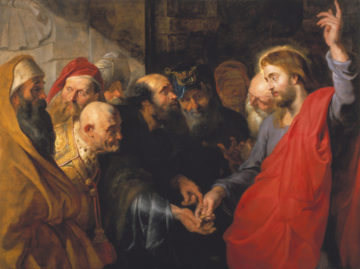
Originally published in the Marina Times San Francisco in April 2019
The Flemish Baroque master painter Peter Paul Rubens spent pivotal years, between 1609 and 1621, in Antwerp. During this time, he refined what would become his trademark style. The Legion of Honor is presenting a unique survey of this period which set the stage for the painter’s international fame. More than 50 works – more than 30 paintings and 20 works on paper- from private and public collections in Europe and North America including the Royal Museum of fine Arts, Antwerp; the Kunsthistorisches Museum, Vienna; The Princely Collections of Liechtenstein; the Rijksmuseum, Amsterdam; the British Museum, London’ the National Gallery of Art, Washington, D.C. and the Metropolitan Museum of Art in New York will be brought together in this exhibit, many in North America or on the US West Coast for the first time.
Rubens returned to his home town of Antwerp after spending years studying painting in Italy. There he examined painters like Caravaggio, Titian and Tintoretto, sometimes copying their paintings to grasp the technique and glean the deeper meanings in the artworks. After this eight-year sojourn, Rubens returned to his home town to a dying mother and a city that had experienced revitalization during his absence.
The exhibit is arranged thematically to emphasize the broad range of Rubens’ mastery of visual styles and subject matter. A key work in Early Rubens is The Tribute Money (ca. 1610-1615), a depiction of Christ draped in boldly-colored cloth, pointing heavenward, surrounded by a sea of upturned faces eagerly receiving his message. The title is a reference to a saying attributed to Jesus in the gospels to “Render unto Caesar the things that are Caesar’s, and unto God the things that are God’s.” Dramatic figurative painting depicting Christian history continues in the dynamic Massacre of the Innocents (ca. 1611-1612). Vivid colors and twisted figures trapped in a moment of violence illustrate the narrative from the Gospel of Matthew in which Herod orders the execution of all male children two years old and younger in the region of Bethlehem. Here we most clearly see Rubens’s influence from Caravaggio and his time in Italy studying the masters. “Early Rubens is a story of a painter and his city, of how Rubens’s return to his chosen home at a particular moment in history sparked in Antwerp an artistic, intellectual and commercial revitalization,” says Sasha Suda, curator of European art at the Art Gallery of Ontario. “The Massacre of the Innocents not only highlights Rubens’s achievement as a painter, it provides powerful insight into the mindset of the citizens of Antwerp in 1610.”
Rubens’s ability to capture human emotion and psychology was critical to his success as a painter of Christian history. Antwerp was a stronghold of Catholicism and was eager for a visual language to match its strong support of Rome’s Counter-Reformation priorities. Rich tones echoing the complex psychology and emotion surrounding the mysteries of faith are evident in The Annunciation (1609) and Christ on the Straw (the Michielsen Triptych) (1618).
Beyond devotional painting, success in figurative art brought Rubens many patrons for portrait work. Established as a “gentleman painter”, he acquired increased social and professional footing through his relationships with Antwerp’s humanists, merchants and religious thinkers. The Fine Arts Museums of San Francisco’s portraits (ca. 1611) of silk merchant Rogier Clarisse and his wife, Sara Breyel, reflect Rubens’s widening network of relationships. The Raising of the Cross and The Battle of the Amazons from the Rijksmuseum are examples of Rubens’s expansion into reproductive engravings and the translations of his compositions into various printmaking projects.
Rubens international reputation expanded as large-scale paintings began to enter the collections of aristocrats and royalty in the 1610’s. By the 1620’s Rubens was a favorite of monarchs in France, England and Spain and became a figure of international influence and diplomacy alongside his artistic pursuits in foreign courts. Kirk Nickel, assistant curator of European painting at the Fine Arts Museums of San Francisco, observes “His inclination to work quickly and at a large scale was essential for Rubens’s success in repopulating the city’s churches with religious images, even while he painted startling episodes of ancient valor, obscure Greco-Roman mythologies, and unsettling moments of biblical history for private collectors.” The exhibit concludes with large-scale paintings, scaled to compete with tapestry or fresco painting. Mural-sized work such as Daniel in the Lions’ Den (1614/1616) will be joined by other life-size scenes to create an immersion effect –the paintings as an environment- that will help the museum-goer appreciate
the scope of the talent that is Peter Paul Rubens.